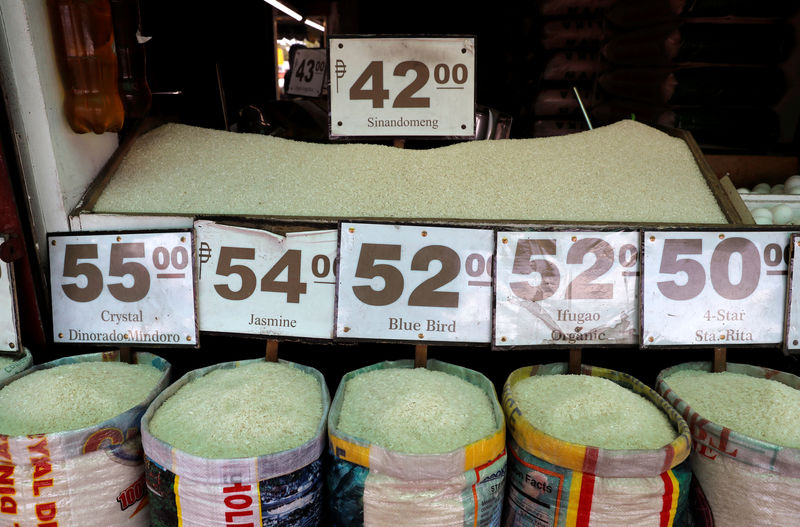MANILA (Reuters) - Philippine annual inflation slowed more than expected in September because of lower food and electricity costs, the statistics agency said on Friday, giving the central bank room to ease monetary policy if needed.
Last month's headline inflation rate of 0.9% was the slowest in more than three years. It was below the 1.1% forecast in a Reuters poll and was within the central bank's 0.6% to 1.4% forecast for the month.
It brought the average inflation in the nine months to September to 2.8%, well inside the central bank's 2%-4% target for the year.
Inflation peaked at a near-decade high of 6.7% in September and October last year. Overall prices have since eased, allowing the central bank to start reversing some of last year's 175-basis points' worth of interest rate increases.
Last week, the central bank slashed its benchmark interest rate for a third time this year to support a slowing economy. It also reduced banks' reserve requirement ratio by 100 basis points to boost credit growth.
"Declining inflation trend would provide increased flexibility in terms of greater leeway for any furthering easing of local monetary policy," said Michael Ricafort, economist at Rizal Commercial Banking Corp.
Bangko Sentral ng Pilipinas Governor Benjamin Diokno said on Tuesday he remained confident 2019 growth would reach 6%, the lower end of its 6-7% forecast, but acknowledged it might just miss the mark.
He declined to say whether further easing would happen in 2019, saying it would depend on inflation rates which are currently "under control".
